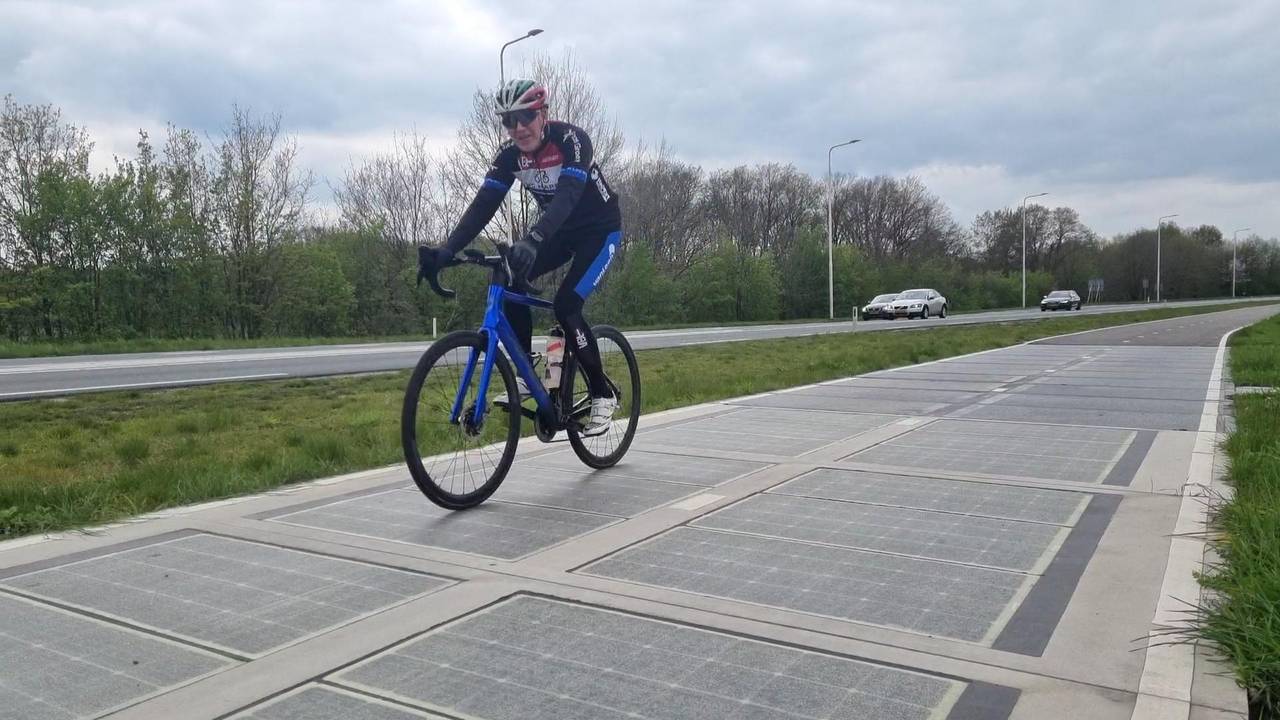After Grave and Oirschot, this month a bicycle path in Wagenberg will also be equipped with solar panels that can be used by two-wheelers. There are three test strips to find out whether the public road is suitable for generating green electricity. In five years it should be clear whether the streets in Brabant will be paved with solar panels.
Windmills and solar farms take up a lot of space and nobody wants them in their backyard, right? A solar cycle path can therefore be a nice alternative. It supplies environmentally friendly energy and does not affect the scarce space, the province outlines. Whether it is indeed a useful addition remains to be seen in the coming years.
In 2019, a solar cycle path of 22 square meters was constructed next to the N324, near Grave. The other has been located along the N395 near Oirschot since last year. There are three different types of solar panels over a length of 35 meters. Each type will be tested for the next five years for lifespan, maintenance costs, (bicycle) safety and power yield.
The electricity yield in Grave is small beer. That goes to a nearby bus stop, a street lamp or a charging point for electric bicycles. In Oirschot it is already a size bigger. According to the calculations, three households can draw electricity from the 85 square meters of solar panels for a year. The solar cycle path along the N285 near Wagenberg will provide ten times that amount with 850 square metres. There will soon be almost 600 solar panels over a length of 500 meters. This could make it the longest solar cycle path in the Netherlands.
Safety cyclists
Cyclists don’t have to worry about slipping on the solar panels. The surface has been made extra non-slip and provided with a layer that prevents wear due to intensive use, freezing or road salt in the winter.
To reduce costs, Brabant is purchasing the solar cycle paths with the provinces of North Holland and South Holland. By placing larger orders at once, it becomes possible for suppliers to invest in technology.
Sunlight
That will be necessary, because it’s not just hosanna with the solar bike paths. The electricity yield is more than a quarter lower compared to solar panels on a roof. This is evident from an earlier trial in Utrecht Maartendijk. The difference lies in the slope of a roof and the flat road surface. The rough coating on the solar cycle paths also results in lower power production. The sunlight is reflected or absorbed by the coating.
And then the costs. A normal concrete bike path lasts up to 60 years. A bike path with solar panels needs to be replaced by worn solar cells after 10 years. The environmental benefits are offset by those cents. CO2 is released with every construction or replacement of a bicycle path. With a ‘regular bicycle path’, this will never be recouped. Thanks to the green electricity, a solar cycle path is CO2 neutral after about 7 years.
It is likely that the technology, and thus the power yield, of solar cycle paths will improve. Whether it will be sufficient to switch completely to sustainable energy in 2050 will be decided in the future. Until then, we will happily continue cycling.
2023-05-06 17:00:33
#solar #cycle #path #supplies #green #energy #saves #space
